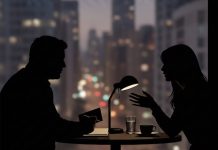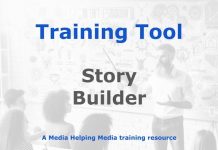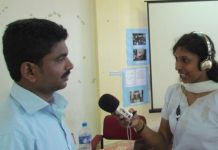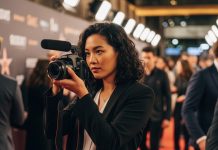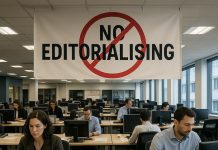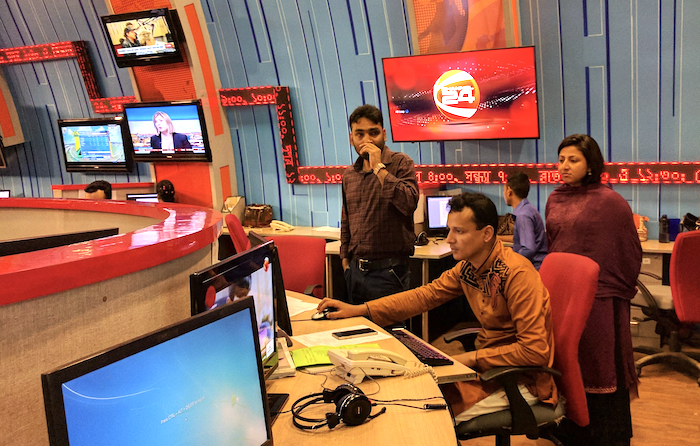
This article sets out the basics for creating a news package for TV. It’s been created for those starting out in TV journalism.
No pictures, no story
The golden rule for all TV news is “no pictures, no story”; pictures provide the “what” – words provide the “why”.
Storytelling in pictures
- Three skills are necessary: Reporting, camerawork and editing
- You need at least a basic knowledge of all three
- The guiding principle: let the pictures tell the story
First steps – what is the story?
- Who is the subject?
- What are they doing?
- Why, and what is their motive?
Research – the evolution of the story
- Find out what has happened
- Uncover the who, why, when, where, and how of the story
- Ensure you understand fully all the elements
Next steps – plan your news-gathering
- Be sure you know what story you want to tell
- Discuss it with your camera operator
- Decide what shots you are going to need
How the elements work
- The hook – grabs the attention
- The context – gives essential background
- The unfolding – the details of the new story
- The wrap – reiterates the main points or throws the story forward
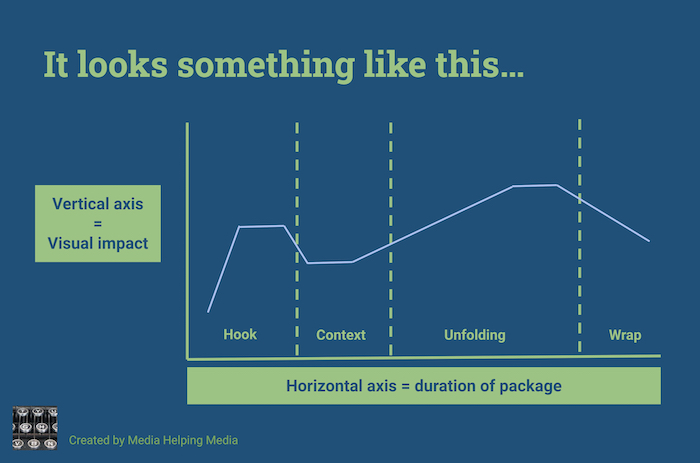
At the scene – get enough shots
- Anything showing action: arrivals, establishing shots, walking shots, noddies, cutaways, sitting-at-a-desk shots, interesting locations etc
- Film faces, especially those showing emotion
- Avoid getting to the edit suite without the shots you need
Interviews – what are we looking for?
- You will need only one or two short clips
- What will tell the story best? Emotion, analysis, an eye-witness account?
- Be neutral in your tone
Interviews – the skill is in the questions
- Don’t ask questions that can be answered with yes or no
- Don’t ask two questions in one
- Use the old favourites: who, what, when, where, why, and how
The stand-up – piece-to-camera
- Why are you doing it?
- How does it help with the story-telling or the editing?
- If it is really necessary, keep it short
Back at the office – consult and agree
- Make a shot-list
- Show your editor the pictures
- Agree on the treatment of the story
At the edit station – choose the pictures first
- Identify the shots which best tell the story
- Decide their optimum length
- Choose the right sequence (not necessarily in which they were recorded)
Editing dos
- Make sure each shot joins up smoothly with the next
- Keep points which attract the eye in the same area of the screen at changes
- Remove anything that can be cut without damaging the flow of the story
- Make a shot list of the finished edit
- Try to let the pictures tell the story
- Let the images speak and add as few words as possible
- With walking shots, end with them walking out of the picture if you can
Editing don’ts
- Don’t use the same shot twice in a package
- Don’t use jump cuts
- Don’t use the first question from an interview – start with the answer
- Don’t start or end a moving shot with a static shot
- If you cut away from an interview or a press conference, do not go back to it
- Don’t use noddy shots in edits; it could come across as agreement
- Don’t split clips and use them out of sequence
Packaging – putting it all together
- Understand – the story and the pictures you will need to tell it
- Capture – action, emotion, atmosphere, editing shots
- Discuss – agree the treatment with your editor
- Edit – use pictures to tell the story
- Script – add as few words as possible to complement the picture
 Creating a compelling TV news package requires proficiency in three core skills: reporting, camerawork, and editing.
Creating a compelling TV news package requires proficiency in three core skills: reporting, camerawork, and editing.
While specialisation is common, a basic understanding of all three is crucial for effective collaboration and a holistic approach to storytelling.
The guiding principle remains: let the pictures tell the story.
However, this doesn’t diminish the importance of strong reporting and thoughtful editing; rather, it elevates the visual element to its rightful place as the primary driver of the narrative.
Understanding your story
The first step is always understanding the story you intend to tell. This involves asking fundamental questions:
- Who is the central figure(s) in the narrative? Consider their background, motivations, and perspectives.
- What is the core event or issue being covered? What are the key developments and their implications?
- Why is this story important?
- What is its relevance to the audience?
- What are the underlying causes and consequences?
- When did the events occur, and what is the timeline of the story?
- Where did the events take place, and what is the significance of the location?
- How did the events unfold?
- What are the different perspectives on the situation?
Research: Unearthing the narrative
Thorough research is essential to understanding the evolution of the story. Don’t just scratch the surface; delve deeper to uncover the complexities and nuances. This involves:
- Background research: Explore existing news reports, articles, and other relevant materials to gain context and identify key players.
- Source verification: Critically evaluate the credibility of your sources and ensure the accuracy of your information.
- Multiple perspectives: Seek out diverse viewpoints to provide a balanced and comprehensive account.
Planning your news gathering
Once you have a solid understanding of the story, collaborate with your camera operator to plan your news gathering strategy. This involves:
- Defining the narrative arc: Determine the central theme and how you will structure the story to engage the viewer.
- Shot list development: Create a detailed list of the shots you will need to capture, considering different angles, perspectives, and compositions.
- Visual storytelling: Think about how you can use visuals to convey emotion, create atmosphere, and enhance the narrative.
The elements of a news package
A well-structured news package typically includes the following elements:
- The hook: A compelling opening that grabs the viewer’s attention and introduces the story’s central theme. This could be a striking visual, a powerful soundbite, or a thought-provoking question.
- The context: Provides essential background information and establishes the relevance of the story.
- The unfolding: Presents the main details of the story, including facts, figures, and different perspectives.
- The wrap: Summarises the main points and may offer a look ahead at future developments.
At the scene – capturing the story
When filming at the scene, aim for a variety of shots to provide flexibility in the editing process. This includes:
- Action shots: Capture the main events as they unfold.
- Establishing shots: Provide context by showing the location and setting.
- Walking shots: Add dynamism and movement to the story.
- Noddies: Record reaction shots of interviewees listening to questions. But be careful with noddies. They could suggest to the audience that you agree with the interview and enforce their point of view. Best not to use noddies.
- Cutaways: Use related visuals to break up interview footage and add visual interest.
- Emotional shots: Focus on faces and expressions that convey the emotions of the people involved.
Interviews: Gathering insights and perspectives
Interviews are crucial for gathering information and different viewpoints. Important points to consider are:
- Quality over quantity: Focus on obtaining a few powerful clips rather than a large number of mediocre ones.
- Open-ended questions: Ask questions that encourage interviewees to elaborate and provide detailed answers. Avoid yes/no questions.
- Active listening: Pay close attention to what the interviewee is saying and ask follow-up questions to probe deeper.
- Neutral tone: Maintain objectivity and avoid leading questions (and avoid noddies).
The stand-up (Piece-to-camera)
The stand-up should only be used when it adds value to the story. It can be used to:
- Provide context: Explain complex information or offer analysis.
- Bridge gaps: Connect different elements of the story narrative.
- Add a personal perspective: Share your insights or observations, but be careful not to lead of try to influence – that is not your job. Your job is to observe and report.
Collaboration and review
Before heading to the edit suite, consult with your editor to discuss the story’s treatment and agree on the main messages. Create a shot list to organise your footage.
Editing: Weaving the narrative
The editing process is where the story truly comes to life.
- Prioritise visuals: Select the shots that best tell the story and use them as the foundation of your edit.
- Smooth transitions: Ensure that each shot flows seamlessly into the next.
- Concise storytelling: Remove any unnecessary footage that doesn’t contribute to the narrative.
- Visual sStorytelling: Let the images speak for themselves and use words sparingly.
Editing dos and don’ts
- Do: Use a variety of shots, maintain visual continuity, and prioritise the narrative flow.
- Don’t: Use the same shot twice, create jump cuts, or start or end moving shots with static shots.
Packaging: The final product
The final stage is packaging all the elements together into a cohesive and compelling news package. Important considerations:
- Understand: The story and the visuals you need to tell it.
- Capture: Action, emotion, atmosphere, and editing shots.
- Discuss: The treatment with your editor.
- Edit: Use pictures to tell the story.
- Script: Write a concise script that complements the visuals.
By following these guidelines and continuously honing your skills, you can create impactful TV news packages that inform, engage, and resonate with your audience.
Storytelling is a craft that requires practice, patience, and a passion for sharing compelling narratives.

Questions
- What is the golden rule for TV news, and why is it important?
- Identify the three skills necessary for storytelling in pictures.
- Explain the guiding principle of letting pictures tell the story in TV news.
- Describe the initial steps in planning a news story according to the text.
- What are the main elements to consider when planning your news-gathering process?
- How do the elements of a news story—hook, context, unfolding, and wrap—contribute to effective storytelling?
- Discuss the importance of capturing emotion in interviews and how it enhances the story.
- What are some editing dos and don’ts mentioned in the text, and why are they significant?
- How does the role of a stand-up, or piece-to-camera, contribute to storytelling or editing?
- Explain the process of packaging a news story and the role of each step in creating a cohesive narrative.
Answers
- The golden rule for TV news is “no pictures, no story.” It is important because pictures provide the “what” of the story, while words provide the “why.”
- The three skills necessary for storytelling in pictures are reporting, camerawork, and editing.
- The guiding principle of letting pictures tell the story emphasises the importance of visual elements in conveying the narrative, allowing images to communicate the story with minimal verbal explanation.
- The initial steps in planning a news story include identifying the story, determining the subject, understanding their actions and motives, and conducting research to uncover the who, why, when, where, and how of the story.
- Key elements to consider when planning your news-gathering process include knowing the story you want to tell, discussing it with your camera operator, and deciding on the necessary shots.
- The hook grabs attention, the context provides essential background, the unfolding details the new story, and the wrap reiterates main points or advances the story, all contributing to effective storytelling.
- Capturing emotion in interviews is important because it adds depth and relatability to the story, making it more engaging and impactful for the audience.
- Editing dos include ensuring smooth transitions between shots and maintaining visual continuity, while don’ts include avoiding repeated shots and jump cuts. These practices are significant for maintaining the flow and coherence of the story.
- A stand-up, or piece-to-camera, contributes to storytelling or editing by providing a direct connection with the audience, offering context, or summarising key points, but should be used sparingly and kept short.
- Packaging a news story involves understanding the story and necessary visuals, capturing action and emotion, discussing treatment with the editor, editing with a focus on visuals, and scripting minimally to complement the images, creating a cohesive narrative.
Related material

